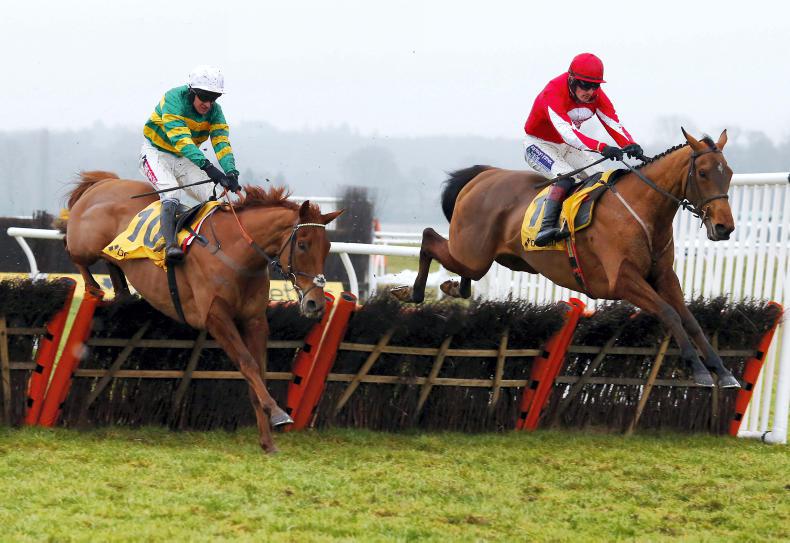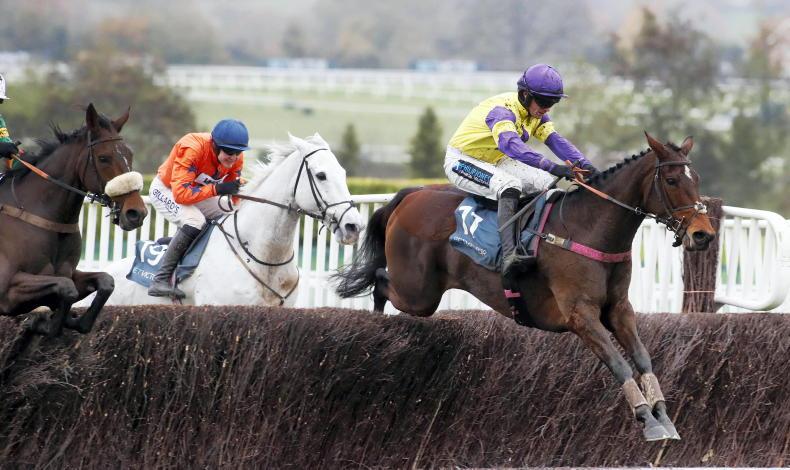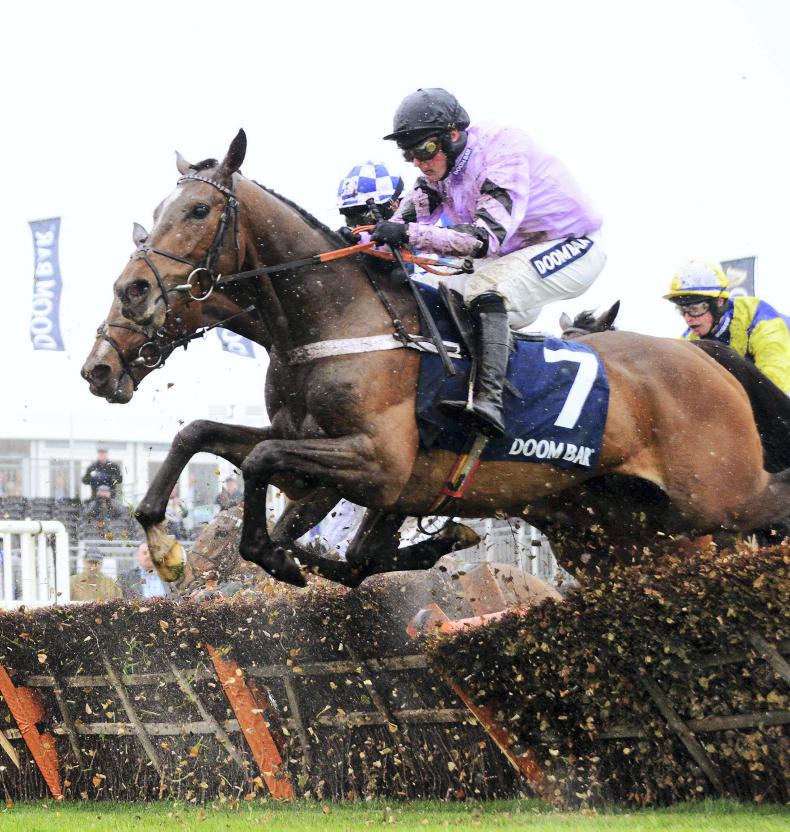1.30 Sky Bet Supreme
Novices’ Hurdle
(Grade 1) 2m½f –
Old Course
NATURE OF THE RACE
THE huge roar that greets the start of the festival opener, and the atmosphere that goes with it, has an important impact on the Supreme. The race starts at the top of the hill and the adrenalin pumping through the jockeys’ arms can feed through to the horses.
Traditionally, a big field of novices went very quickly early on. This makes it more of a stamina test than might be expected (especially when the ground has been heavily watered and is at its slowest on the first day).
While the fields are smaller these days, the pace hasn’t slowed and the requirements remain a sound jumping technique, the tactical speed to hold a position and stamina at the trip.
Historically, luck in-running in big fields had been important, especially with novices making mistakes at a fast gallop. This led to plenty of shock results. The smaller fields have reduced this element of uncertainty and the market leaders have dominated recent renewals.
GRADE 1 CLASS
SHINING THROUGH
The Irish programme is set up to provide a series of Grade 1s for the top horses in different divisions to run in. In the two-mile novice hurdle division, that’s the Royal Bond in early December, the Future Champions at Christmas and the Deloitte (over two miles and two furlongs) in early February.
The mentality of Irish trainers is to aim the best novices at those races (though dry autumns such as we had this season can mean the top novices aren’t ready for the Royal Bond).
By contrast, the single Grade 1 in Britain, the Tolworth in early January, is not seen as a natural target by many British trainers for the top two-mile novice hurdlers. Perhaps this has led to Grade 1 hurdling form being underestimated in the market, especially by British punters. This century, 18 Grade 1-winning hurdlers have lined up and five have won -6.75pt (38%) profit to level stakes.
Grade 1 form generally has held up well (you’d have made a small profit by backing every horse that had contested a Grade 1 hurdle, nine having won this century). The depth of the Irish Grade 1s ought to make them obvious form to follow, but Grade 1 hurdling form in general is still being underestimated.
THE EXCITEMENT OF
A STRING OF 1s
One problem many punters can never overcome is seeing a string of 1s next to an unbeaten horse’s name and overestimating its chances. The inherent desire to see such a horse as the next superstar overcomes rational judgment.
Twelve of the last 14 winners had won their previous start, but only Captain Cee Bee and Altior were unbeaten over hurdles.
Last-time-out winners are regularly underbet in the Supreme if they were beaten earlier on in their hurdles career, as punters mistakenly think they’ve had their limitations exposed by that earlier defeat. In reality they were often still learning their trade when they were beaten, especially when the defeat was in the autumn.
If you narrow the group of last-time-out winners to exclude horses unbeaten over hurdles, you generate much more value. In the last decade, 49 horses have lined up having won their previous hurdle, but not being unbeaten over timber. Seven have won and if you’d backed them all blind, you’d have made a level stakes profit of 41pts (83%).
RECENT FORM
THE CRUCIAL CLUE
With so few horses coming off the flat now, the runners generally have less racecourse experience than they used to.
Recent form (rather than early-season form when horses are getting educated about racing) is crucial. Eighteen of the last 20 winners had won their previous start, including the last six. There’s been an average of just over eight last-time-out winners in the field during that period and if you’d backed them all blind, you’d have made a 17pt (10%) profit. If you think that those at the front of the market need taking on, an impressive last-time-out winner at a bigger price can often provide good value.
THE IRISH SECOND STRING?
The long-term Irish record is really strong, having won 12 of the last 21 renewals from just 128 runners during that period (12pt (10%) profit backing blind).
However, when I was cutting my gambling teeth in the 1990s this wasn’t a race for the classic Irish banker, but it often was one for vibes – perhaps because as the opening race of the meeting, everyone wanted to talk about it.
It used to be good advice with none of the five Irish-trained winners between 1991 and 2000 being the shortest in the market of the Irish runners. Destriero, Montelado, French Ballerina and Sausalito Bay were all the Irish second string (or joint-second of the Irish horses in the market) and Tourist Attraction was the joint-fourth most popular Irish-trained horse in the betting.
For the first time in four years Willie hasn’t had a banker in this over the winter. Melon has emerged as the ante-post favourite at the time of going to print but that’s based on homework and a maiden win. The value may be with a second string, just as it used to.
AVOID HEADGEAR
As set out in some of the later chapters, headgear has been a real positive in certain festival races, in particular for rejuvenating horses in handicap chases.
By contrast, traditional headgear such as blinkers ought to play much less of a part in races for young horses such as the Supreme. That’s been the case - since Flown won in blinkers in 1992, all 33 runners in headgear have been beaten, only three of which managed a place.
THE VERDICT
Melon has headed the market ever since his impressive performance in a maiden hurdle at Leopardstown at the end of January. However, horses coming from the flat have a terrible record in this, which is also a worry for his stablemate Bunk Off Early - only one of the 49 horses that started their careers on the flat have been placed.
Another concern for Melon backers is that the Supreme is usually won by a horse with a fair degree of experience, shown by the fact that 11 of the last 13 winners had run in at least four hurdle races.
In short, at around 4/1 Melon offers very little value, and like Min last year, is priced up more on his trainer’s name than the form he has shown on the racecourse.
The Weatherbys Champion Bumper has proven a solid guide over the years, and the 2015 and 2016 winners both feature prominently in the betting. Ballyandy looks like he will run in this over the Neptune, but you get the sense that connections of the 2015 winner, Moon Racer, are leaning towards running in the Champion Hurdle.
If the two were to line-up in this though, preference would be for the Nigel Twiston-Davies-trained BALLYANDY. Punters may be put off by the fact he was beaten earlier in the season but as touched on earlier in the piece, that shouldn’t be viewed too negatively.
More focus should be placed on the fact that he was an impressive winner last time, showing he is progressing nicely ahead of this assignment. The fact he has run beyond two miles and two furlongs is a negative - only two of the last 12 winners have done so - but many of the market leaders have chinks in their armour, and he looks the most solid option.
Neon Wolf would be a massive player if Harry Fry sent him here rather than the Neptune.
He may have only had two runs over hurdles, but he has won a point-to-point and a bumper, so has some experience under his belt. Conditions are likely to be very different to his demolition of Elgin in the Rossington Main Novices’ Hurdle at Haydock but with the ground often at its slowest for the first race, he could easily be favoured over Ballyandy if lining up.
One at a slightly bigger price to consider would be Nicky Henderson’s River Wylde. He wasn’t highly tried on his first two runs over hurdles (both at Ludlow) but he was a very impressive winner of the Dovecote Novices’ Hurdle at Kempton when connections put him into deeper waters.
He passed this test with flying colours and he looks a solid each-way play at 12/1, especially with the likes of Moon Racer and Neon Wolf likely to run elsewhere.




 This is a subscriber-only article
This is a subscriber-only article
 It looks like you're browsing in private mode
It looks like you're browsing in private mode










SHARING OPTIONS: